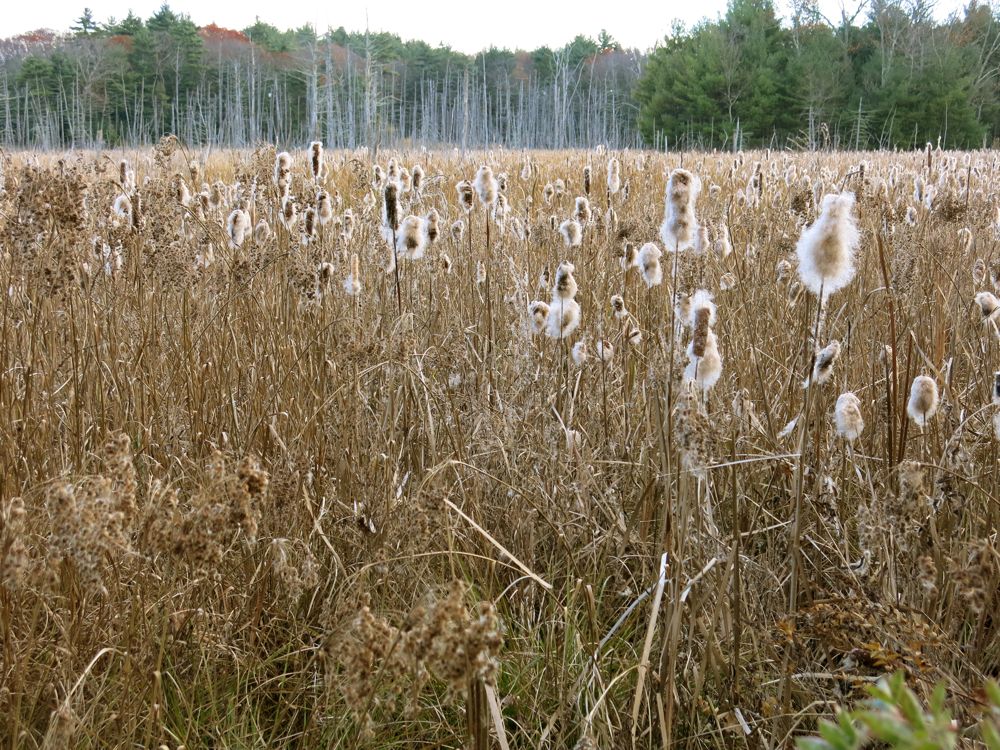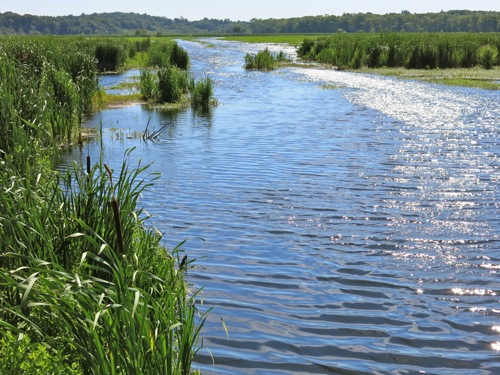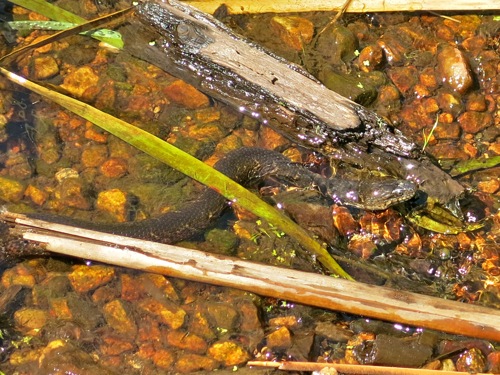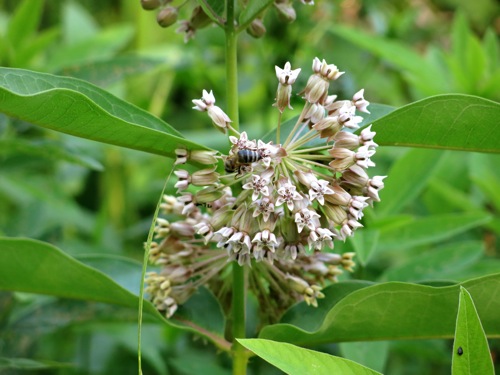
Above: Cattails in a wetlands along the abandoned Old Colony Railroad (later New York, New Haven and Hartford Railroad) grade that parallels Old Marlboro Road, Concord, Mass.
This wetlands area has a substantial expanse of open water, due to beaver dams; in the photo there is open water on the far side of the cattails, and you can see the grey trunks of dead trees, trees which could not survive the flooding from the beaver activity. Beyond that, you can see hills covered mostly in white pine (Pinus strobus), with some red oak (Quercus rubra) mixed in; this mix of pine and oak is typical on upland glacial till soils in eastern Massachusetts.
These are characteristic colors of mid-November wetlands in Concord: the dull brown and white of dead cattails and their seeds and the grey of dead or leafless deciduous trees; a sky covered with dull gray clouds above; and in the background, the dark green of white pines with a few spots of dull red provided by the red oaks which still retain their leaves.



